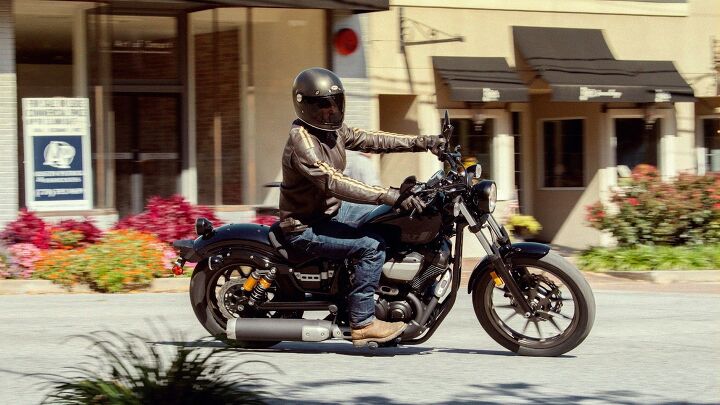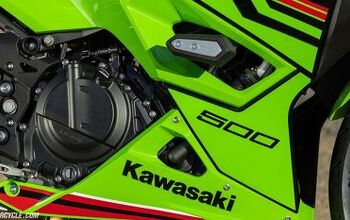Survival Skills for New Riders

When you’re newly licensed, the riding landscape can seem like pure, unstoppable chaos. Here are some ways we use to sort it all out.
Aboard their motorcycles, new riders face a brave new world. Not literally, of course. But from the standpoint of learning fresh physical skills, powers of observation, actions and reactions, and embedding vital strategies for survival, it certainly is. If this is you, first and foremost locate, attend, and successfully complete a Motorcycle Safety Foundation (MSF) course in your area. Then prepare for and pass the written and riding tests, as required by your state’s department of motor vehicles (DMV).
All of that might just bring us up to date, like as of today. Then above and beyond that training, here are some techniques that have worked for us over the years. Use what you like, dismiss what you don’t, or just consider them in general; we hope something on this list helps.
Motorcycle.com thanks Yamaha for sponsoring this new rider series.
Imagine a Quarterback
In football, the quarterback is perhaps the most lauded, heroic player – the guy with the ball. But that comes with peril because the quarterback is who the opposing team wants to sack. We’ve thus adopted an attitude when riding: We’re the guy with the ball, and every other driver on the road wants to get us. A juvenile approach, perhaps, but the advantage is that it breeds wariness – continually, genuine, and on a real-time basis – of other drivers. Such constant suspicion may seem callous, but we’ll accept that, because wariness of other vehicles can be a lifesaver.
Adopt a Leader
While you’re learning to ride, there’s a ton of good sense in playing lead and follow with a seasoned rider. You follow them and learn their practices; they follow you to assess yours. Practice with them daily, weekly, or whenever you can. Don’t do it to impress, just ride normally and digest the observations and info. And then incorporate their good, expert advice.
Keep Your Head on a Swivel
Every DMV pamphlet probably has a driving rule of thumb about checking the mirrors every few seconds. Multiply that for motorcycling, where situational awareness is essential. When you accept that anything and everything could happen at any moment, you’re on track to an awareness mindset that will hold you in good stead for a long time. Get used to automatically glancing across intersections, across corner apexes, at traffic to your left, right, and behind, and into driveways and alleys. This observational duty should not replace or displace your most essential job of riding well, and happily. It’s supplemental, but essentially so.
Look for Escape Paths
A favorite and constant tool for us has long been, “Where will I go?” Name it whatever you like, but the goal is, especially at intersections, pick out a path to take if you must escape. Examples may include a car turning left in front of you; a van blindly changing lanes into your space; and construction materials falling off the pickup in the lane ahead. The possible list and chances are nearly endless. But the “escape path” practice can work, just like it may work for a Super Cub pilot in the Alaskan bush, constantly eyeing sandbars in a riverbed as emergency places to land. One day, you might need it.
Right Turns are Safer
If you’re learning to ride in traffic, or are uneasy about riding in the thick of it, consider sticking to the right lane and right hand turns for a while. These keep you away from some of the chaos of city traffic, particularly turning left across intersections. Yes, making right turns adds distance to your trip, but isn’t that part of the goal – getting miles in? (Example: Instead of turning left at an intersection, proceed past it, turn right at the next three streets, and then approach the original intersection and proceed straight across. That’s three right turns instead of one left turn, but you’ve done it.)
Keep It in Gear
While waiting your turn at a stop sign, traffic light, or most especially in a left-turn lane, make a habit of keeping your bike in gear with the clutch lever pulled in. Yes, one can argue that this creates minimally more clutch wear. But it gives you something that’s way more important – instant getaway capability if circumstances demand it. When split-seconds count, pulling in the clutch and engaging first gear takes time you might need to stay safe.
Watch the Driver – and Their Wheels
We have found that generally, a car will proceed in the direction the driver is looking. So, while street riding, we make a habit of noting drivers’ posture and eye position, if possible, while we’re in intersections, approaching certain oncoming traffic, and in other situations where an “opposing” vehicle might constitute a threat. If they’re not looking at you, they may not even consciously see you. And that’s a recipe you don’t want.
When it comes to busy places such as intersections, shopping centers, driveways, and other situations where a car might suddenly vector in an unexpected direction, notice their front wheels. Where are they pointed, and just as importantly, are they rolling? Those two quick observations, along with noting the driver’s head position, gaze, and maybe even their hand position on the steering wheel, can provide useful intel about where the car is headed.
Dirty Learning
The dirt is arguably the finest place to learn, practice, embed, and master motorcycle handling skills. Since nearly every foot of surface is different, the contour, context, and makeup of the terrain demands constant analysis and vigilance by the rider. Moreover, riding in the dirt is essentially a constant state of traction loss, and demands of the rider are the opposite, searching for good traction. How’s that for a great game? (It actually is.)
In the dirt you learn to look at trails for way more than just where they will take you; additionally, you study the makeup of the ground. Sand means the front tire may plow and the rear tire may dig in or the engine may bog; loam is like chocolate cake – enjoy it; and hardpack “blue groove” roads are nearly like asphalt. You get the idea. Plus, the constant wheel slips and balance adjustments that go along with dirt riding will absolutely improve your street skills. More dirt means better street!
Become a Motorcycle.com insider. Get the latest motorcycle news first by subscribing to our newsletter here.

John L. Stein brings 30 years of both automotive and motorcycle experience, having written for AutoWeek, Car and Driver, Motor Trend, Sports Car International, Chevy Outdoors, Truck Trend, Cycle World, Motorcyclist, Adventure Travel, and Men’s Journal, just to name a few. His articles have been published in the US, England, Japan, Australia and France. His technical knowledge combined with his ability to understand and effectively communicate what a motorcycle is doing underneath him is an invaluable resource to the Motorcycle.com team.
More by John L. Stein


































Comments
Join the conversation
I usually find the backroads with no traffic even in Alaska
Agree its a good article. Learning to scan for dangers is overload for new riders. Those I have taught are mentally exhausted by it, but with time it becomes a normal thing, and it improves their cage driving.
Along with keeping it in gear, do not stop in the middle of the lane where slick stuff accumulates, and being at the edge of the cage in front gives an escape path for the idiot behind not paying attention. Scan your mirrors looking for those not stopping. Use an aftermarket flashing brake light - and flash it as a cage approaches from behind.
All new riders should start in the dirt, to get a feel for low/lost traction, and learn coordination of shifting and brake use.
Headlights on bright in the day makes a huge difference (I trust my own study), as do aux light sources at the front. The wider the points of light the better.
Wear Hi-Viz colored gear. Since changing to it, it has reduced the # of drivers not seeing me. It also can help others see you if you go off the road. With the way cages get out of the left lane on highways, some think I'm police or 1st responder.
Ride in rural, low traffic areas to reduce the dangers. I live in a smaller town, and choose not to ride in larger towns except on the highway to pass through them.